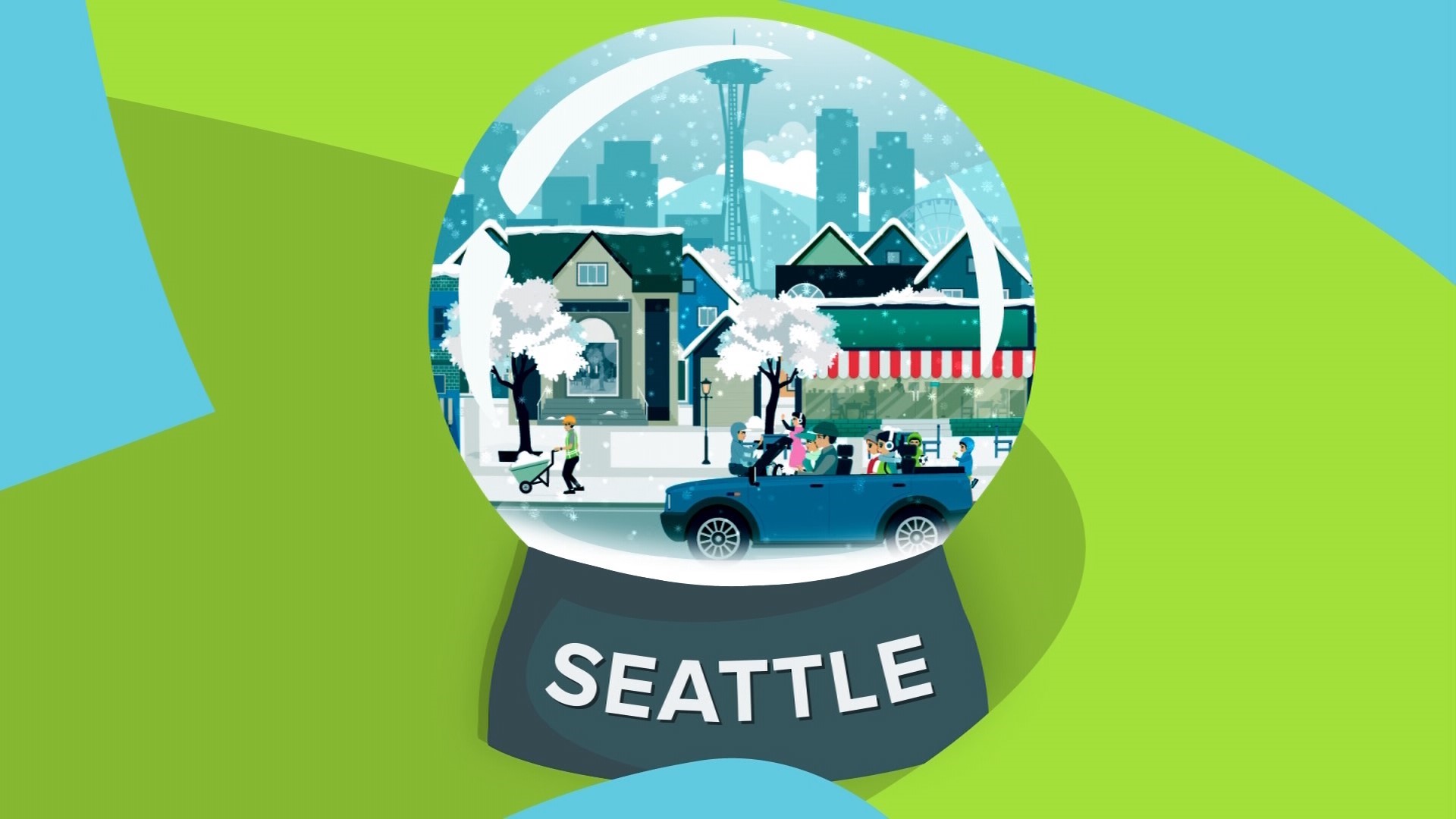SEATTLE — Seattle likely won’t have a white Christmas this year, but it is expected to be rainy with an atmospheric river moving through Monday.
The weather system is expected to bring steady rain through Tuesday and possibly into Wednesday.
Snow levels remain around 4,500 to 5,000 feet, so major flooding is not expected from this atmospheric river, unlike the previous system that drenched western Washington in early December and caused historic flooding on the Stillaguamish River near Arlington.
Long-range forecast models show rain is expected to stick around through most of next week.
How often does it snow on Christmas in Seattle?
The short answer: not often. In 70 years of record-keeping, Sea-Tac Airport has only recorded five days of measurable snow on Christmas, and at least an inch of snow has fallen on just 3% of Christmases.
The last time it snowed on Christmas in Seattle was in 2017 when an inch fell. There were some snowflakes in 2021 but there was just a trace recorded at Sea-Tac.
What it takes to get snow in Seattle
It takes the perfect cold weather recipe to see snow in Seattle, and that’s because of mild temperatures in the Puget Sound and Pacific Ocean. In winter, those water temperatures are in the mid to upper 40s.
Those mild temperatures make it difficult the reach freezing temperatures in western Washington.
However, the Fraser River outflow in British Columbia can help bring that colder air to the region.
Interior British Columbia experiences sub-freezing temperatures due to the two large mountain ranges helping separate interior B.C. from coastal B.C.
As high pressure builds over British Columbia and low pressure builds over Puget Sound, we get a vacuum effect that can pull winds at up to 80 miles per hour out of the Fraser River gap and whip it into places near Bellingham, the San Juans, and even down to Seattle.
When this cold air moves into our neighborhoods, snow is more likely to fall in our backyards.

